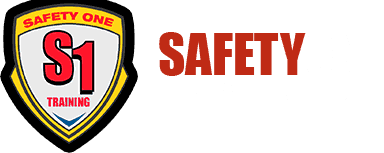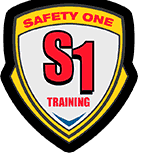04 Jun THE MOST COMMON WORKPLACE HAZARDS (THAT MOST PEOPLE DO NOT EVEN NOTICE)
We often speak with different types of organizations that have feedback, thoughts and ideas related to safety that we like to share. These are featured under our guest blogger section of our blog and here is the latest:
The Most Common Workplace Hazards (That Most People Do Not Even Notice)
Nearly 3 million nonfatal workplace injuries were reported to the Bureau of Labor Statistics by private employers in 2012, the last year statistics are available. These are just the reported injuries. Year after year workers are injured on the job and suffer without reporting their injuries, often because they are not aware of the risk that caused their injury, or their employer’s responsibility to protect them from those injuries. Employers and employees alike need to understand these common workplace hazards and what can be done to prevent injuries.
Slip and Fall Hazards
Walkways in the workplace need to be safe and free from tripping hazards. Clear walkways are essential to a safe workplace, yet the walkway is often where boxes, filing carts, containers and even trash get dropped. These can cause someone to trip and fall, and in the event of an emergency that requires an evacuation, they can be serious problem areas.
Items left in the walkways are just one type of tripping hazard. Open drawers on filing cabinets and desks, and cabinet doors left open in storage areas can also be a problem. Employees must be trained to close all doors when they are done using them.
Spilled items can also be a fall hazard, and many employees forget to think about this risk when they spill something. Spills need to be cleaned immediately and proper signage used to ensure that no one slips on the wet surface while it dries.
Finally, watch for transitions between different walking surfaces. Edges that can catch someone off guard can lead to a fall. Properly designing these areas or posting “watch for step” signs can help reduce this risk.
Trash Cans
Can the trash can be hazardous? Absolutely! Trash cans that are overflowing contribute to slip and fall hazards, and that’s only one of the lesser risks. Trash in the workplace often contains combustible items, like paper. If the trash can is stored in an unsafe place near a heat or ignition source, the end result can be devastating. Ensure that trash cans are stored safely and are emptied daily.
Indoor Air Quality
Indoor air quality is a real concern in the workplace. While your facility may not be sued for poor indoor air quality, you will suffer from poor productivity. The United States Department of Labor warns that poor indoor air quality can cause problems like headaches, fatigue, concentration problems and irritation of the airways and eyes. All of these will impact the productivity of your workforce. Also, employees with conditions like asthma will suffer when exposed to indoor allergens.
The maintenance team at your facility will need to check with an HVAC professional to determine what steps to take to improve indoor air quality. Ensuring that the facility has proper ventilation and air filtration can help.
Ergonomic Hazards
OSHA warns against ergonomic hazards in the workplace, which can lead to long-term injury or illness for workers. Problems like carpal tunnel and tendonitis, for example, can be somewhat prevented with proper workplace ergonomics. Frequent lifting, poorly adjusted workstations, repetitive, awkward movements and the use of too much force to complete a task are all sources of ergonomic hazards. Limiting repetitive motion and setting up the work areas so they are ergonomically designed can help limit these injuries and risks.
Work Organization Hazards
The organization of the workplace and the demands placed on workers can be a hazard, and one that few people recognize. The workload placed on an employee or the intensity at which the job is performed can lead to injury, stress and strain. A lack of respect and poor flexibility in the workplace can also add strain and emotional distress to workers. Over time these conditions can cause physical and psychological problems that impact productivity and need to be treated.
Biological Hazards
When people work with or around other living things, including people, animals and plants, they are often exposed to biological hazards. Bodily fluids, molds, bacteria, insect and animal bites, and even droppings from animals or birds can all cause illness or injury.
Whether you are a worker or an employer, understanding these risks is crucial. With the right understanding, you can take the necessary precautions to prevent these often overlooked hazards.
Author Bio:
Mario Cattabiani works at Ross Feller Casey, LLP as the Director of Communications. The Ross Feller Casey Firm is a personal injury and medical malpractice law firm based in Philadelphia.


Ellie
Posted at 02:50h, 16 FebruaryGeez, that’s unbebievalle. Kudos and such.